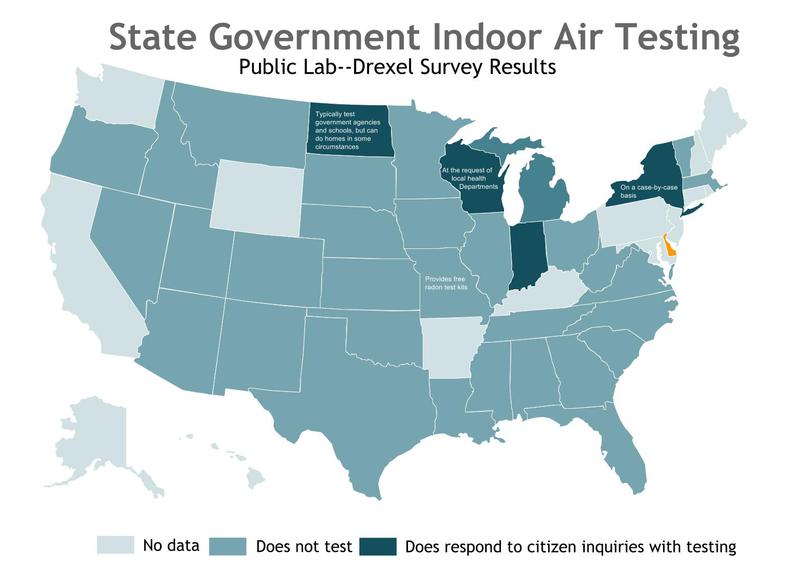
Vermont Indoor Air
How do residents of Vermont seek information about indoor air quality and address potential concerns with air quality in their residence or in public buildings? A brief introduction to information and services that are available through Vermont Department of Health and Town Health Officers regarding indoor air quality is included in this wiki.
Note: The Vermont Department of Health declined to participate in our national survey regarding state agencies response to residential indoor air concerns. The information provided here was obtained through online searches.
Contact Information
Vermont Department of Health Environmental Health Division
108 Cherry Street, Suite 201 Burlington, VT, 05402
802-863-7226
http://healthvermont.gov/enviro/index.aspx
Indoor Air Information and Services
Indoor Air Environments is a section of the Environmental Health Division, which is within the Department of Health. In the Indoor Air section, there is a specific program for improving indoor air quality in schools and information regarding the state tobacco, asbestos, and lead laws. For a handful of other indoor air contaminants, there is information available pertaining to the sources of those contaminants, their health effects, and ways to reduce exposure. The common indoor air contaminants that the Indoor Air Environments webpage provides information about include mold, lead, formaldehyde, asbestos, tobacco smoke, radon, and VOCs, and there are additional fact sheets available for benzene, carbon monoxide, ozone, and particulate matter.
The Vermont DOH mostly provides online information about the contaminant and provides a list of potential environmental contractors that could do air testing and/or remediation work. The VDOH does not test residential homes or offer remediation services, and there are not personnel that speak with concerned residents. Rather, the information that is available from VDOH is posted online without additional services.
The Environmental Health Division webpage includes a link to the Vermont Public Health Laboratory which provides analytical services for a variety of public health concerns such as infectious diseases, drinking water quality, and environmental toxins. However, there isn’t information regarding residential indoor air quality testing on the VPHL website, and testing residences is not among their core functions. The VDOH recommends residents contact environmental contractors for home assessment and remediation, and provides a list of Vermont-based contractors.
Local Health Officers
In Vermont, each town or city has a Town Health Officer who is responsible for investigating public health hazards and seeking voluntary compliance with city codes to address those hazards. Town Health Officers may be found here: http://healthvermont.gov/local/tho/tho_list.aspx, and their roles and responsibilities are detailed in the Town Health Officer Manual, http://healthvermont.gov/local/tho/documents/TownHealthOfficerManual.pdf, with information regarding indoor air quality on page 51. While the manual indicates that informational questions from citizens should be directed to the Vermont Department of Health, specific hazard-related inquiries with enforcement or remedial potential would be addressed by the Town Health Officer.
